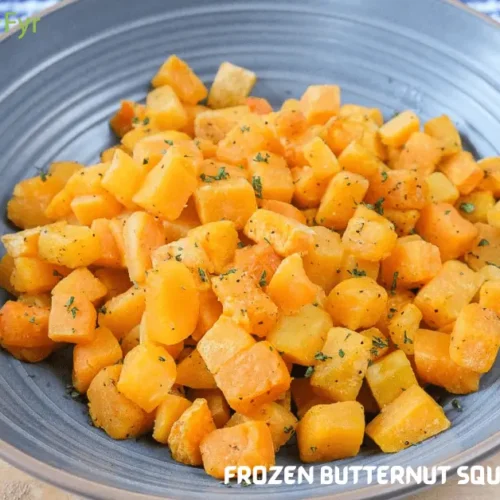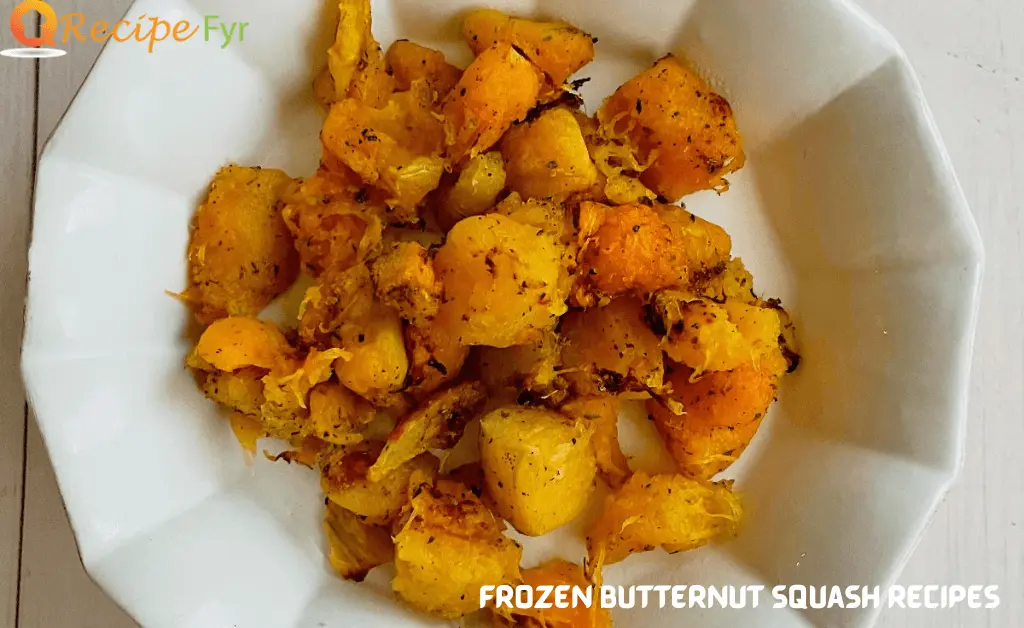When it comes to fall vegetables, butternut squash is a favorite for many. Its sweet flavor, crispy edges, and creamy center make it a versatile ingredient that can be used in various dishes. However, the prep work involved in handling a whole butternut squash can be a bit time-consuming and challenging. Thankfully, there’s a shortcut that eliminates the need for peeling, seeding, and chopping: frozen butternut squash. In this article, we’ll explore the world of frozen butternut squash recipes, providing you with easy and delicious ways to enjoy this delightful vegetable. Whether you’re a busy home cook or simply looking for a convenient option, frozen butternut squash is a game-changer. Let’s dive in!
Why Choose Frozen Butternut Squash?
You might be wondering why you should opt for frozen butternut squash when fresh squash is readily available. Well, frozen butternut squash offers several advantages. First and foremost, it saves you valuable time. With the prep work already done for you, you can skip the peeling, seeding, and chopping, cutting down your cooking time significantly. Frozen butternut squash is also incredibly convenient, allowing you to enjoy this seasonal favorite any time of the year. Additionally, it retains its nutritional value, making it a healthy choice for your recipes. So, don’t hesitate to head to the freezer aisle and grab a bag of frozen butternut squash for your culinary adventures.
Roasting Frozen Butternut Squash: A Quick and Delicious
Option One of the simplest and most satisfying ways to prepare frozen butternut squash is by roasting it. The process brings out the squash’s natural sweetness, resulting in crispy edges and a tender, creamy center. To achieve the best results, here are some tips to keep in mind:
- Preheat the baking sheet: Start by preheating your baking sheet in the oven as it heats up. This allows the squash to brown and crisp up as soon as it hits the hot surface, avoiding steaming and ensuring a delightful texture.
- Don’t skimp on the oil and salt: Coat the squash with a generous amount of olive oil to promote browning and add a rich flavor. Sprinkle a pinch of salt to enhance the natural sweetness of the squash.
- Roast on the lowest oven rack: For that perfect caramelized sear, roast the squash on the lowest rack in the oven. This technique helps create a crispy crust that makes flipping the squash pieces easier and ensures even cooking.
Beyond Roasting: Exploring Frozen Butternut Squash Recipes
While roasting is a fantastic way to enjoy frozen butternut squash, there are numerous other delicious recipes that you can explore. Here are a few ideas to get you started:
- Creamy Butternut Squash Soup: Blend cooked frozen butternut squash with vegetable broth, aromatic spices, and a touch of cream for a comforting and nourishing soup.
- Butternut Squash Risotto: Add thawed frozen butternut squash cubes to a creamy risotto, creating a vibrant and hearty dish with a hint of sweetness.
- Butternut Squash and Sage Pasta: Sauté thawed frozen butternut squash cubes with butter, garlic, and fresh sage, then toss with cooked pasta for a simple yet flavorful meal.
- Also Try: Asparagus Goat Cheese And Tarragon Tart Recipe
- Also Try: Easy Rick Stein Lamb Tagine Recipe
Ingredients:
- 1 (16-ounce) bag frozen butternut squash (about 4 cups, do not thaw)
- 2 tablespoons olive oil
- 1 teaspoon kosher salt
- Freshly ground black pepper
Equipment:
- Rimmed baking sheet
- Medium bowl
Instructions:
- Preheat the oven and baking sheet: Arrange a rack in the lowest position of your oven and preheat it to 450°F. Place a rimmed baking sheet in the oven to heat as well.
- Season the squash: In a medium bowl, place the frozen butternut squash, breaking up any pieces that are frozen together. Add the olive oil, salt, and a few grinds of black pepper. Toss the squash until the pieces are evenly coated with the oil and seasonings.
- Transfer the squash to the hot baking sheet: Carefully remove the heated baking sheet from the oven and pour the seasoned squash onto it. Arrange the squash in an even layer, ensuring that the pieces are not crowded to prevent steaming.
- Roast the squash: Place the baking sheet with the squash in the preheated oven. Roast the squash for 18 to 20 minutes, or until it is tender and crispy in some places. Gently stir the squash halfway through the cooking time to ensure even browning.
- Serve and enjoy: Once the squash is done roasting, remove it from the oven. You can serve the roasted butternut squash as a side dish or use it as an ingredient in other recipes.
Note: Leftovers can be refrigerated in an airtight container for up to 5 days.
Conclusion:
Frozen butternut squash opens up a world of possibilities for incorporating this beloved vegetable into your cooking. With its convenience, time-saving qualities, and retained nutritional value, frozen butternut squash is a game-changer in the kitchen. Whether you choose to roast it, create soups, or experiment with other recipes, the versatility of frozen butternut squash allows you to enjoy its deliciousness all year round. So, embrace the ease and flavor that frozen butternut squash brings to your culinary repertoire and savor the goodness of this fall favorite in every season.

Frozen Butternut Squash Recipes
Equipment
- Rimmed baking sheet
- Medium bowl
Ingredients
- 1 16-ounce bag frozen butternut squash (about 4 cups, do not thaw)
- 2 tbsp olive oil
- 1 tbsp kosher salt
- Freshly ground black pepper
Instructions
- Preheat the oven and baking sheet: Arrange a rack in the lowest position of your oven and preheat i to 450°F. Place a rimmed baking sheet in the oven to heat as well.
- Season the squash: In a medium bowl, place the frozen butternut squash, breaking up any pieces that are frozen together. Add the olive oil, salt, and a few grinds of black pepper. Toss the squash until the pieces are evenly coated with the oil and seasonings
- Transfer the squash to thehot baking sheet: Carefully remove the heated baking sheet from the oven and pour the seasoned squash onto it. Arrange the squash in an even layer, ensuring that the pieces are not crowded to prevent steaming.the hot
- Roast the squash: Place the baking sheet with the squash in the preheated oven. Roast the squash for 18 to 20 minutes, or until it is tender and crispy in some places. Gently stir the squash halfway through the cooking time to ensure even browning.
- Serve and enjoy: Once the squash is done roasting, remove it from the oven. You can serve the roasted butternut squash as a side dish or use it as an ingredient in other recipes
Notes
Does frozen butternut squash need to be cooked?
Yes, frozen butternut squash needs to be cooked before consumption. It is typically sold pre-cut and uncooked, requiring cooking to achieve the desired texture and flavors.
Does frozen squash get mushy?
When cooked properly, frozen squash does not get mushy. By following the recommended cooking methods and techniques, such as roasting, you can achieve a desirable texture with crispy edges and a creamy center.
Should you defrost frozen butternut squash before cooking?
No, you do not need to defrost frozen butternut squash before cooking. It can be cooked directly from its frozen state, which saves time and effort.
Should you defrost butternut squash before roasting?
No, there is no need to defrost butternut squash before roasting. You can roast it straight from the frozen state, resulting in deliciously caramelized edges and a tender center.
